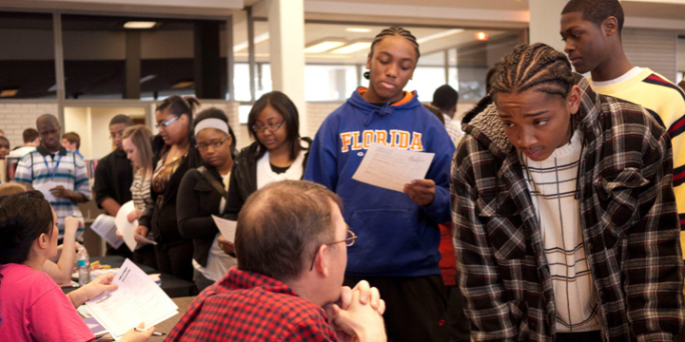
The eight young men, between the ages of 18 and 25, funneled the relief funds into their personal bank accounts by stealing personal information from people who are on coronavirus welfare programs. According to court documents, the accused began their scam in June 2020. It continued through April of this year. It is still unclear how the suspects stole the personal information of their victims.
The criminals were caught after they flaunted their ill-gotten wealth on social media. Court documents show that at least four of the young men posed with large amounts of $100 bills, sometimes in front of high-end cars. Authorities were also able to track them down after they used the same addresses and cellphone numbers for multiple false welfare claims.
The suspects were caught with more than 100 debit cards in other people's names. They used these cards to make large withdrawals in various locations in the New York City boroughs of Queens and Brooklyn.
Six of the eight defendants were charged Tuesday in the U.S. District Court for the Eastern District of New York in Brooklyn. Two suspects are still at large.
"As alleged, the defendants not only fraudulently obtained $2 million in pandemic-related unemployment benefits using information from third-party victims, they audaciously displayed the proceeds of their fraud – large amounts of stolen cash – on social media," said Acting U.S. Attorney Mark J. Lesko in a press release. "This Office will not hesitate to bring the full weight of the law against defendants who would pocket public funds that are intended to alleviate the hardship of others."
"There is never an excuse to knowingly commit fraud and steal from a system that was designed to help New Yorkers in a time of need," said Commissioner Roberta Reardon of the New York State Department of Labor. "However, it's even more despicable when these thieves steal a lifeline from New Yorkers in the midst of a public health pandemic. We have no tolerance for criminals, and if you break the law, you will be held accountable."
The arrests were announced by Lesko, Reardon and representatives from the Postal Inspection Service and the federal Department of Labor. Six of the eight individuals were tracked down with help from the New York City Police Department.
Fraud rampant in the federal government's bloated welfare system
During the pandemic, the welfare programs the eight men siphoned millions of taxpayer dollars out of greatly expanded. Benefits payouts were increased and the number of people eligible to receive welfare checks grew.
"In its rush to get taxpayer money out the door, the government created a target-rich system flush with cash and light on verification," wrote Brad Polumbo, a policy correspondent for the librarian economic think tank the Foundation for Economic Education.
This is not the first example of fraud in the expanded coronavirus welfare system. Experts believe that more than $200 billion of unemployment benefits distributed during the pandemic may have been stolen by other fraudsters.
This is according to ID.me, a computer security service used to verify worker identities. ID.me is used in 19 states that account for around 75 percent of the country's population.
The federal government originally estimated that around $63 billion would be lost to fraud, or around 10 percent of the pre-pandemic fraud rate.
"The level of fraud is truly unprecedented," said ID.me CEO and co-founder Blake Hall. "The main driver is the PUA program… For criminals, this program essentially makes every American and their identity a target."
The Pandemic Unemployment Assistance (PUA) program provides benefits for self-employed and contractual employees. ID.me's data estimates that around 30 percent of claims under the PUA are fraudulent. Around 20 percent of the fraud is linked to personal data breaches, up to 10 percent through social engineering and around 2.5 percent through face matching – wherein a criminal uses a video or image of the victim to claim their identity and welfare benefits.
"[The government] wanted to extend eligibility to people that are not in the system like gig workers, the self-employed. The nature of what [they] are setting up is very vulnerable," said Andrew Stettner, an expert on unemployment insurance.
According to the Century Foundation, an independent think tank, as many as 46.2 million Americans received at least one week of unemployment benefits last year. This includes around 30.6 million people who were able to receive at least one week of state unemployment benefits, and 15.5 million who received at least one week of PUA. This number means around one out of every four American workers had to rely on unemployment for at least one week during the coronavirus pandemic.
"Unemployment is a program that certainly has a high rate of overpayment," explained Stettner. "What's different about this period is the level of organized crime activities targeting unemployment insurance is definitely unprecedented."
Petty thieves like the eight young men from New York were only skimming the top. "Organized crime rings in Russia, China, Nigeria and Ghana … have made it their job to exploit the pandemic and creatively work to steal funds from state agencies, including PUA funds from the federal government," said Hall. (Related: Australian children use welfare checks to gamble amid coronavirus lockdowns.)
Most of the fraud occurred in blue states like California, Washington and Massachusetts. "They pick and choose those states that they could get the most per person off of," said Stettner.
In California, fraudulent claims cost the state at least $11.4 billion. The state is an easy target because it relies on debit cards for distributing the unemployment benefits. In Washington, around 122,000 known or suspected fraudulent claims are expected to cost the state around $600 million. In Massachusetts, the state paid out up to $687 million in fraudulent claims.
Learn more about how the federal government is allowing millions in taxpayer dollars to disappear right under people's noses due to fraud by reading the latest articles at BigGovernment.news.
Sources include:
Please contact us for more information.




















